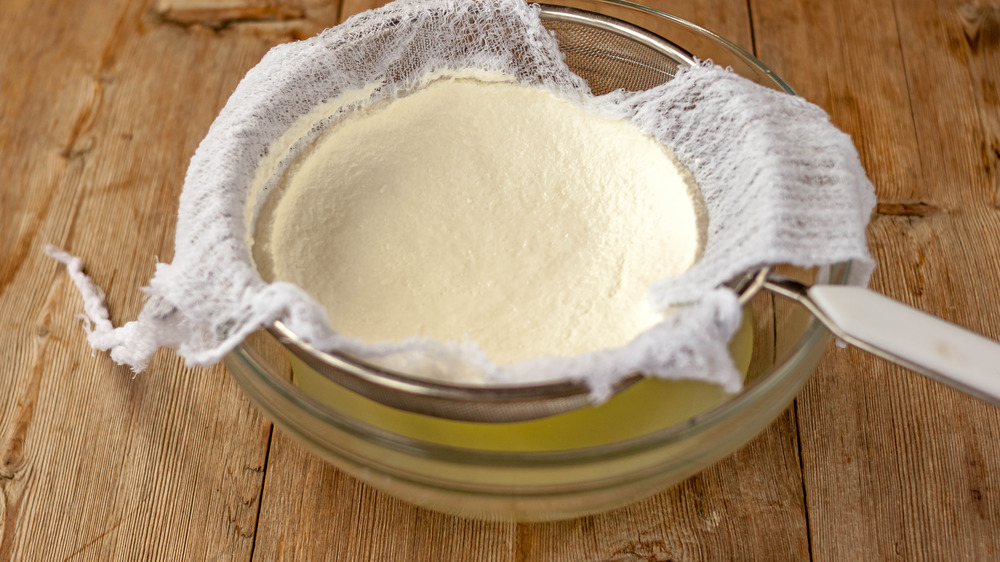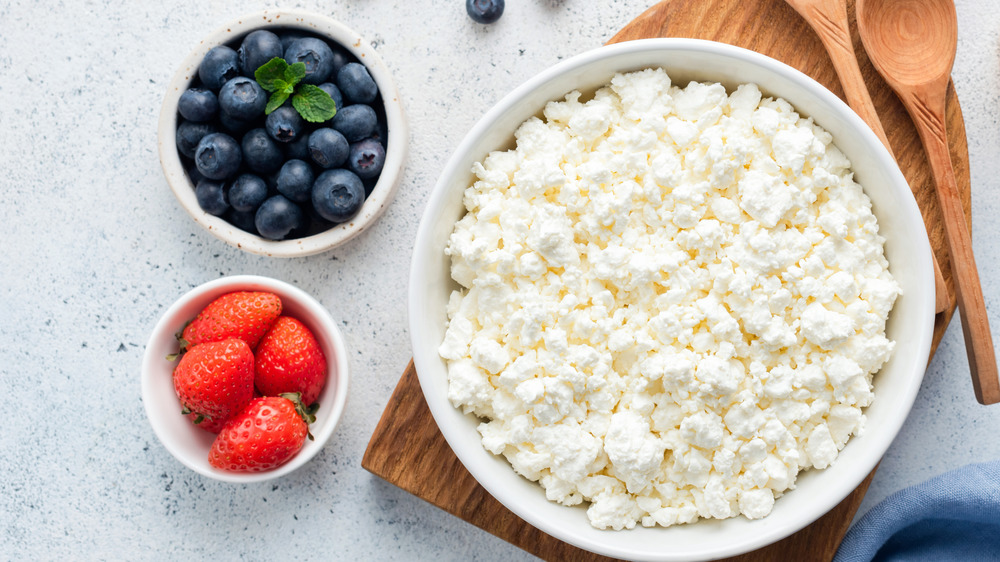Here's The Difference Between Ricotta Cheese And Cottage Cheese
While some may conflate ricotta and cottage cheese in some way, that really shouldn't be the case. They're totally disparate ingredients, and while they may look similar, they have very little in common. Chowhound echoes this point, stating that, in addition to the fact that both are made from cow's milk, ricotta and cottage cheese are moist, soft, and white. What are the primary distinctions? They differ in taste, texture, ingredients, and the recipes they're best suited for.
Ricotta hails from Italy and is smooth, yet somewhat grainy. It's slightly sweet and has less sodium but more calories. Bon Appetit notes that "ricotta' actually means re-cooked in Italian because it is made of whey, otherwise known as the liquid that is left behind after making homemade cheese. Ricotta is delicious in lasagna and any baked pasta or dolloped on top of pasta, used to enrich sauces, and spread on toast or bruschetta.
What's the difference between cottage cheese and ricotta?
In contrast with ricotta, cottage cheese is classified by the size of its curds, has more sodium, and has a moister, lumpier texture. It's traditionally thought of as "diet food," sometimes paired with fresh or dried fruits, nuts, and seeds. While there are certainly some swaps that can be made if you have one cheese on hand but not the other, they're certainly not interchangeable. Both kinds of cheese are delicious, of course, but adding cottage cheese to a lasagna will definitely not mimic the trademark richness and mouthfeel of a high-quality ricotta.
Of course, it's your kitchen, so mix and match as you please. But we'd argue that ricotta is more fitting for pasta and savory dishes, whereas cottage cheese is better suited for breakfast and sweeter pairings. At the same time, ricotta with honey is also a delicious combination, so stay open-minded and you might wind up whipping up some really spectacular treats with either cheese!

